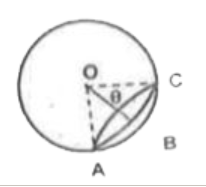Water is kept in a beaker of radius 5.0 cm. Consider a diameter of the beaker on the surface of the water. Find the force by which the surface on one side of the diameter pulls the surface on the other side. Surface tension of water =0.075Nm−1.
To solve the problem of finding the force by which the surface on one side of the diameter pulls the surface on the other side, we can follow these steps:
Step 1: Understand the Concept of Surface Tension
Surface tension (S) is the force per unit length acting along the surface of a liquid. It causes the liquid surface to behave like a stretched elastic membrane.
Step 2: Identify the Given Data
- Radius of the beaker (r) = 5.0 cm = 0.05 m (convert to meters)
- Surface tension of water (S) = 0.075 N/m
Step 3: Calculate the Length of the Diameter
The length of the diameter (L) can be calculated using the formula:
L=2×r
Substituting the value of the radius:
L=2×0.05m=0.1m
Step 4: Apply the Formula for Force due to Surface Tension
The force (F) exerted by the surface tension across the diameter can be calculated using the formula:
F=S×L
Substituting the values of surface tension and length:
F=0.075N/m×0.1m
Step 5: Calculate the Force
Now, performing the multiplication:
F=0.075×0.1=0.0075N
Step 6: Express the Final Answer
The force by which the surface on one side of the diameter pulls the surface on the other side is:
F=7.5×10−3N
Final Answer
The force is 0.0075N or 7.5×10−3N.
---
Surface tension (S) is the force per unit length acting along the surface of a liquid. It causes the liquid surface to behave like a stretched elastic membrane.
- Radius of the beaker (r) = 5.0 cm = 0.05 m (convert to meters)
- Surface tension of water (S) = 0.075 N/m
The length of the diameter (L) can be calculated using the formula:
L=2×r
Substituting the value of the radius:
L=2×0.05m=0.1m
The force (F) exerted by the surface tension across the diameter can be calculated using the formula:
F=S×L
Substituting the values of surface tension and length:
F=0.075N/m×0.1m
Now, performing the multiplication:
F=0.075×0.1=0.0075N
The force by which the surface on one side of the diameter pulls the surface on the other side is:
F=7.5×10−3N
The force is 0.0075N or 7.5×10−3N.
Topper's Solved these Questions
- BOOK - HC VERMA ENGLISHCHAPTER - SOME MECHANICAL PROPERTIES OF MATTEREXERCISE - Worked out Example17videos
SOME MECHANICAL PROPERTIES OF MATTER
- BOOK - HC VERMA ENGLISHCHAPTER - SOME MECHANICAL PROPERTIES OF MATTEREXERCISE - Exercises32videos
SOME MECHANICAL PROPERTIES OF MATTER
- BOOK - HC VERMA ENGLISHCHAPTER - SIMPLE HARMONIC MOTIONEXERCISE - Question for short Answer15videos
SIMPLE HARMONIC MOTION
- BOOK - HC VERMA ENGLISHCHAPTER - SOUND WAVESEXERCISE - All Questions133videos
SOUND WAVES
Similar Questions
A liquid is kept in a beaker of radius 4 cm. Consider a diameter of the beaker on the surface of the water. Find the force by which the surface on one side of the diameter pulls the surface on the other side. Surface tension of liquid =0.075Nm−1
View SolutionA 5.0 cm long straight piece of thread is kept on the surface of water. Find the force with which the surface on one side of the thread pulls it. Surface tension of water =0.076Nm−1
View SolutionA capillary tube of radius 0.50 mm is dipped vertically in a pot of water. Find the difference between the pressure of the water in the tube 5.0 cm below the surface and the atmospheric pressure. Surface tension of water =0.075Nm−1
View SolutionFind the surface energy of water kept in a cylindrical vessel of radius 6.0 cm. Surface tension of water =0.075Jm−2.
View SolutionA circular plate of radius 4 cm and weight W is made to rest on the surface of water. If a minimum pull of W + F is required to clear the plate off the water surface then find F. Given surface tension of water Sw=0.072Nm−1
View SolutionA rectangular glass plate of dimensions 5 cm × 4 cm is placed flat on the surface of water. Find the downward force on the plate due to surface tension. Given surface tension of water = 0.073 N m−1
View SolutionThe length of needle foating on the surface of water is 1.5 cm the force in addition to its weight required to lift the needle from water surface will be (surface tension of water =7.5N/cm)
View SolutionConsider a small water drop in air . If T is the surface tension , then what is the force due to surface tension acting on the smaller section ABC ?
 View Solution
View SolutionCalculate the force required to take away a flat circular plate of radius 0.02m from the surface of water. The surface tension of water is 0.07Nm−1
View SolutionThe force required to lift a circular flat plate of radius 5 cm on the surface of water is: (Surface tension of water is 75 dyne/cm):-
View Solution

